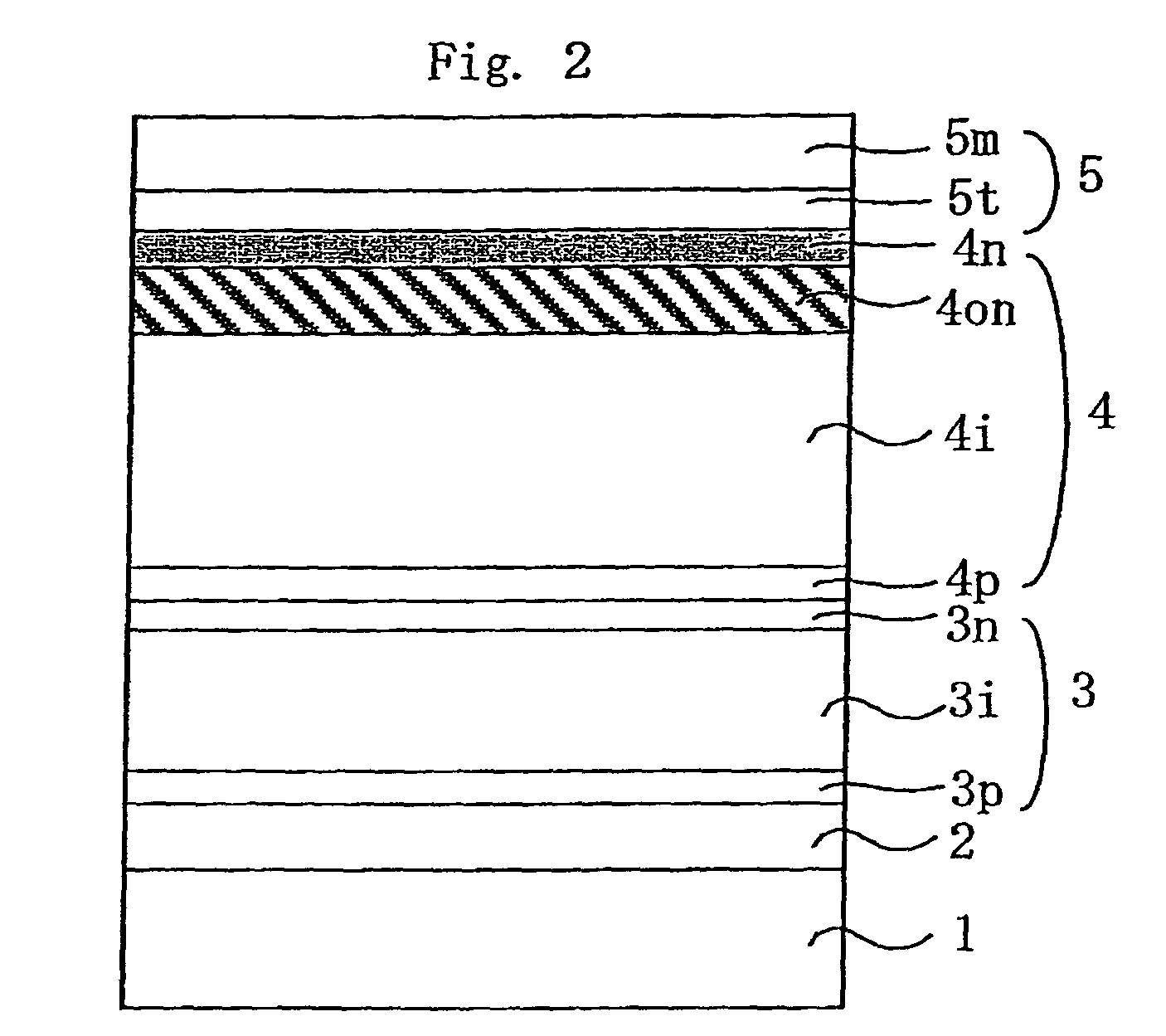Silicon based thin film solar cell
a thin film solar cell and silicon technology, applied in the direction of basic electric elements, electrical apparatus, semiconductor devices, etc., can solve the problems of increasing facility costs, increasing production tact, and increasing production costs, so as to maintain a series resistance of the solar cell, reduce the cost, and reduce the cost
- Summary
- Abstract
- Description
- Claims
- Application Information
AI Technical Summary
Benefits of technology
Problems solved by technology
Method used
Image
Examples
example 1
[0035]FIG. 3 is a sectional view showing schematically a hybrid thin film solar cell produced in each Example and each Comparative Example.
[0036]First, a transparent electrode layer 2 consisting of SnO2 and having a minute uneven structure on a surface thereof was formed by a heat CVD method on a principal surface of a translucent board 1 consisting a blue plate glass of a thickness of 0.7 mm.
[0037]Next, in order to form an amorphous photoelectric conversion unit 3, the translucent board 1 having a transparent electrode layer 2 formed thereon was introduced in a high frequency plasma CVD device. After the equipment was heated up to a predetermined temperature, an amorphous p type silicon carbide layer 3p with a thickness of 160 angstroms, a non doped amorphous i type silicon photoelectric conversion layer 3i with a thickness of 3000 angstroms, and an n type silicon layer 3n with a thickness of 300 angstroms were sequentially laminated.
[0038]Furthermore, in order to form a crystallin...
example 2
[0043]In Example 2, an almost similar process as in Example 1 was carried out except for having varied a refractive index at a wavelength of 600 nm in a range of 1.65 to 2.65 by varying only film-forming conditions of an n type silicon based low refractive index layer 4on. FIG. 5 shows a relationship between refractive indexes of the silicon based low refractive index layer, and conversion efficiency of the hybrid thin film solar cell.
example 3
[0044]In Example 3, an almost similar process as in Example 1 was carried out except for having varied a thickness of an n type silicon based low refractive index layer 4on in a range of 100 angstroms to 1000 angstroms. FIG. 6 shows a relationship between a thickness of the silicon based low refractive index layer and obtained conversion efficiency of the hybrid thin film solar cell.
PUM
 Login to View More
Login to View More Abstract
Description
Claims
Application Information
 Login to View More
Login to View More - R&D
- Intellectual Property
- Life Sciences
- Materials
- Tech Scout
- Unparalleled Data Quality
- Higher Quality Content
- 60% Fewer Hallucinations
Browse by: Latest US Patents, China's latest patents, Technical Efficacy Thesaurus, Application Domain, Technology Topic, Popular Technical Reports.
© 2025 PatSnap. All rights reserved.Legal|Privacy policy|Modern Slavery Act Transparency Statement|Sitemap|About US| Contact US: help@patsnap.com



